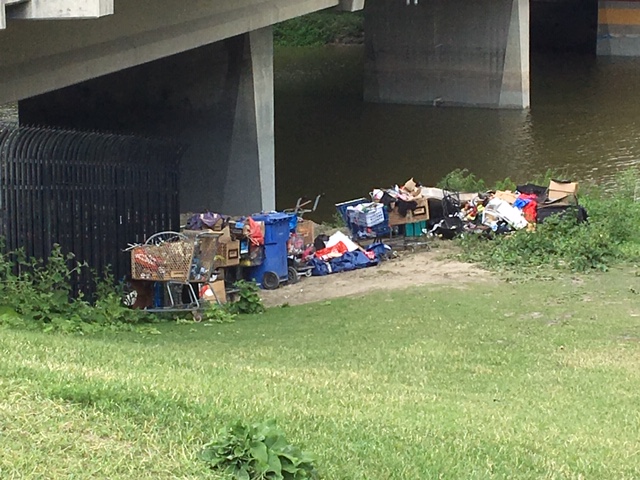End Homelessness Winnipeg wants to clear up some stigma and misconceptions surrounding people experiencing homelessness by releasing a media toolkit and residents’ guide.

“We know that individuals experiencing homelessness experience a disproportionate amount of discrimination and stigma on the basis of their housing status,” says Kris Clemens, manager of communications and community relations with End Homelessness Winnipeg.
The residents’ guide addresses how one can respectfully offer help to someone who is taking shelter in their yard or building entrance; such as offering food, water or socks, and letting them know you’ll be contacting an outreach worker.
It also provides contact information for Main Street Project Outreach and several other resources.
The second part of the guide and a large portion of the media toolkit addresses stereotypes and how to properly respond.
For example, it says not to assume a person is dangerous or intoxicated just because they don’t have shelter, adding that a person experiencing homelessness is more likely to be a victim of violence. Signs of hypothermia or a mental health crisis, it says, are often mistaken for intoxication.
- NDP to join Bloc in backing Liberals against non-confidence vote
- Quebec premier calls on Bloc Québécois to help topple Trudeau government
- Via Rail CEO calls 10-hour train delay ‘unacceptable,’ says new evacuation plan in place
- Ethics commissioner will not investigate Boissonnault over ‘Randy’ texts, says the matter is closed
The media toolkit is more specific in its use of language and context.

Get daily National news
“One of the things frequently voiced in the homelessness sector and by people with lived experience is to use person-first language,” Clemens says.
In practice, that means avoiding the terms “homeless person” or “the homeless.”
“Part of the reason is it centres the humanity of the person, but the other reason why it’s important is it drives home the fact that homelessness isn’t a permanent feature of one’s life. It’s a circumstance that many different people go through for many different reasons.”
The toolkit also advises media to separate issues. For example, homelessness, panhandling, and substance use are all distinct issues; where one might apply, the others may not.
The non-profit says it’s announcing the guides ahead of the release of its “Strategy to Support Unsheltered Winnipeggers” report sometime later this month.
That report was created by a strategy group made up of End Homelessness Winnipeg along with representatives from the city, first responders, outreach workers, homeless-serving agencies and people who have experienced homelessness.
The group — Kikininaw Oma: the Strategy to Support Unsheltered Winnipeggers — is the same one which created the toolkit and guide.
Clemens says the group has been working on concrete recommendations and longer-term strategies to help people experiencing unsheltered homelessness claim their right to adequate housing, which Clemens points out has been declared a human right by the United Nations.
Key features of that as-of-yet unpublished strategy include ensuring there are adequate community outreach services to connect people who might not be aware with what is available, 24/7 safe spaces, and of course, adequate housing.
More information can be found on End Homelessness Winnipeg’s website.













Comments